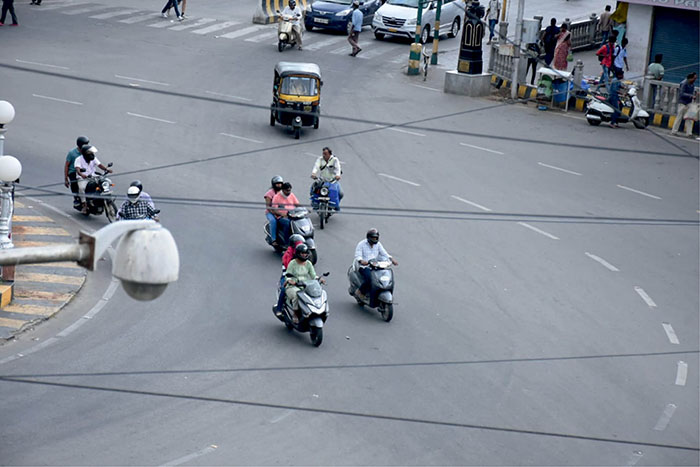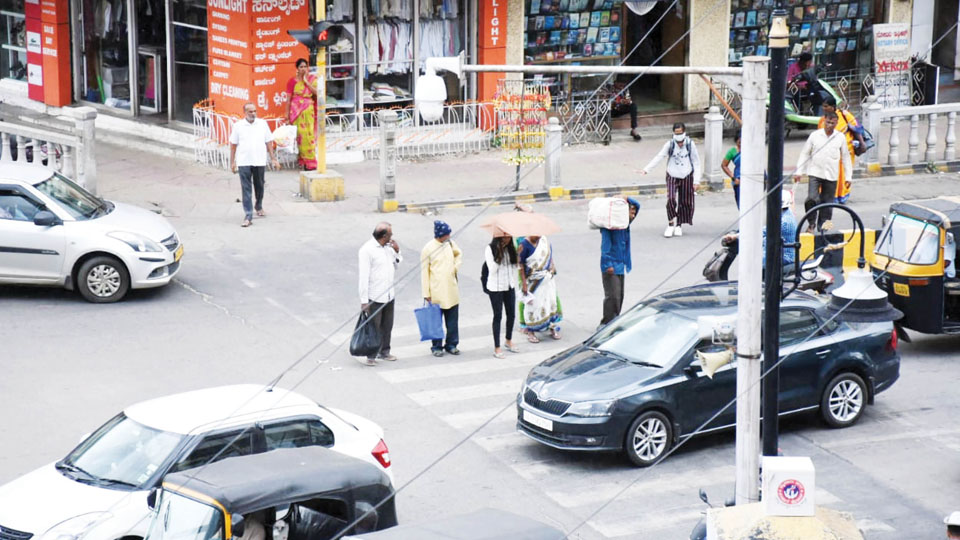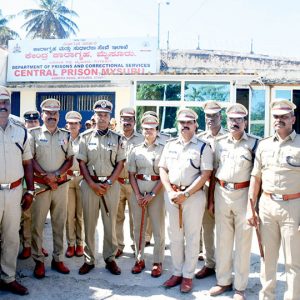Fully automated 24×7 process to pull vehicle data from RTO; challans to be sent to offenders
Mysore/Mysuru: Mysuru City Police are set to enhance its traffic monitoring capabilities by deploying 25 advanced Artificial Intelligence (AI)-based Automatic Number Plate Recognition (ANPR) cameras across the city as part of an Intelligent Traffic Management System (ITMS).
These advanced cameras will be in addition to the 108 already functioning cameras that are monitored at the Traffic Management Centre, Office of the City Police Commissioner.
On July 25, Additional Director General of Police (ADGP) for Traffic and Road Safety Alok Kumar tweeted, “Inspected the progress of road safety-related work on Bengaluru-Mysuru Expressway AI-based cameras deployed on a trial basis to capture overspeeding. Introducing Intelligent Traffic Management System in Mysore City soon, any suggestion from citizens is welcome in this regard.”
This initiative under ITMS will be launched in the city under the leadership of Mysuru City Police Commissioner Ramesh Banoth, who has already submitted a proposal to the Government for approval. The installation of these cutting-edge cameras is anticipated to be completed before the upcoming Dasara festival. With the implementation of 25 AI-based CCTV cameras, Mysuru City Police aims to curb traffic violations more effectively. The cameras will have the ability to automatically identify various violations of traffic rules, as specified in Indian Motor Vehicle Act of 1988.
These violations include but are not limited to speeding, red-light jumping, and unauthorised lane changes. Once a violation is detected, the AI system will swiftly capture the vehicle’s number plate and gather the violator’s address from Regional Transport Office (RTO) database.

More cameras expected
“The 25 AI-based cameras will be installed at important junctions and each junction — where there is high vehicle density — will have four to five cameras. We are getting more AI cameras after the first 25 are installed. The 108 cameras capture the traffic violations and the data is transferred to the Traffic Management Centre and the RTO is contacted for the vehicle data only then the penalty challans are printed to be sent to the violator’s address,” Ramesh Banoth told Star of Mysore.
“In the AI-based system, the visuals are captured and the vehicle data is pulled from the RTO directly and the e-challans, which are electronic traffic violation tickets, are printed to be delivered at the addresses of the violators with a digital footprint. The process that usually took two to three days is completed within minutes with AI-based cameras,” the Commissioner explained.
Efficient operations
One of the key advantages of these AI-based cameras is their ability to operate autonomously and efficiently. The real-time data processing capabilities of AI enable rapid identification and tracking of traffic violators. As a result, the overall process of generating e-challans and issuing notices will be significantly expedited, allowing for quicker enforcement of traffic rules and regulations, Ramesh Banoth added.
These intelligent cameras can capture clear images from a distance of 500 metres and will also help the Police to maintain law and order, he said. The existing CCTV cameras, along with photos taken by traffic police officers equipped with body-worn cameras (Cobras), are already being used to identify traffic violators. However, the process of obtaining violator addresses from the RTO database and issuing notices is done manually.
Automatic process
With the implementation of AI-based cameras, the manual process will be replaced by an automated system, leading to greater efficiency and accuracy in handling traffic violations.
Additionally, violators will receive SMS notifications automatically when they commit traffic offences, further raising awareness and ensuring compliance with traffic rules. The cameras are equipped with sophisticated computer vision algorithms and machine learning capabilities.
These technologies enable the cameras to intelligently analyse the real-time video feed and detect various traffic violations with a high degree of accuracy. “They can significantly reduce the need for manual intervention in identifying traffic violations, thereby freeing up law enforcement personnel for other critical tasks,” the Police Commissioner said.








Recent Comments